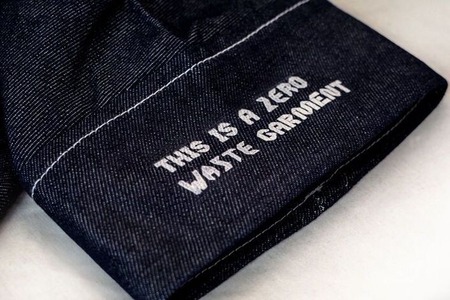
Master's graduate students develop textile technology and fiber breakthrough
YarnsandFibers News Bureau 2023-12-12 16:57:15 – GermanyA master’s graduate student from the Institut für Textiltechnik (ITA) at RWTH Aachen University has introduced a groundbreaking development—polyethylene-based carbon fibers that are two to three times thinner than conventional ones. Importantly, Diniz demonstrated that utilizing polyethylene-based precursors could potentially slash the cost of carbon fibers by 50 percent in the future. Recognizing his exceptional work, he was awarded the prize for the best master’s thesis in German textile mechanical engineering, along with a prize of 3,500 euros.
Carbon fibers, prized for their excellent properties, find applications in critical industries like wind power, automotive, and aerospace. Diniz's master’s thesis not only introduced a cost-effective manufacturing process for carbon fibers using a polyethylene precursor but also enhanced their surface quality without compromising structural integrity. Moreover, he managed to reduce the time-consuming sulphonation process by an impressive 25 percent. These advancements promise a broader range of applications for carbon fibers in key industries.
Annika Datko, a bachelor’s graduate from ITA, achieved remarkable results in her thesis. She showcased how near-infrared (NIR) sensor technology can be employed to sort used textiles based on their fiber composition with an impressively low average mean error of only 4 percent on a laboratory scale. This method opens the door to more sustainable textile recycling, allowing for fiber-to-fiber recycling, especially crucial for textile blends. For her outstanding contribution, Datko received the 3,000 euros prize for the best bachelor’s thesis from the German Textile Machinery Association.
Currently, used textiles are predominantly sorted by hand, posing challenges for accurate fiber-to-fiber recycling. Datko's innovative approach, using NIR sensor technology for sorting textiles, offers a new and efficient solution. By irradiating textile samples with NIR light and analyzing the resulting spectra, she demonstrated the ability to differentiate between various fiber compositions. This method, with a mere 4 percent average mean error, showcases great potential for revolutionizing textile sorting and recycling practices.
Market Intelligence
Ask for free sample Report

experience
Customer Base
dedicated team
Countries Served Worldwide







![Freitag unveils new Mono[P6] circular backpack](https://www.yarnsandfibers.com/wp-content/uploads/2024/04/Freitag.jpg)

